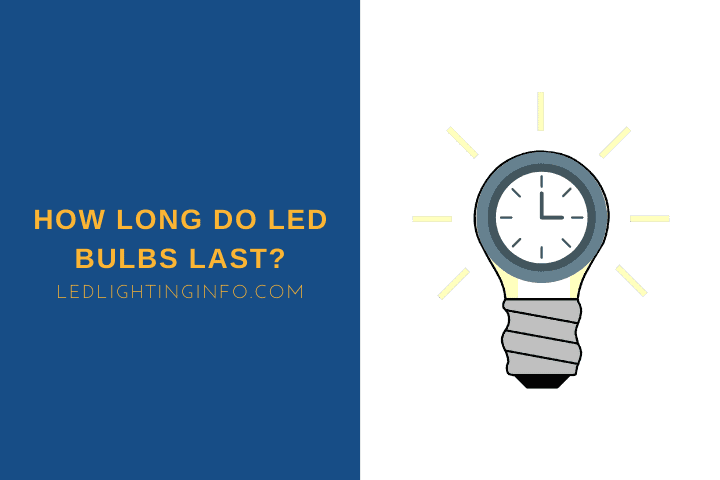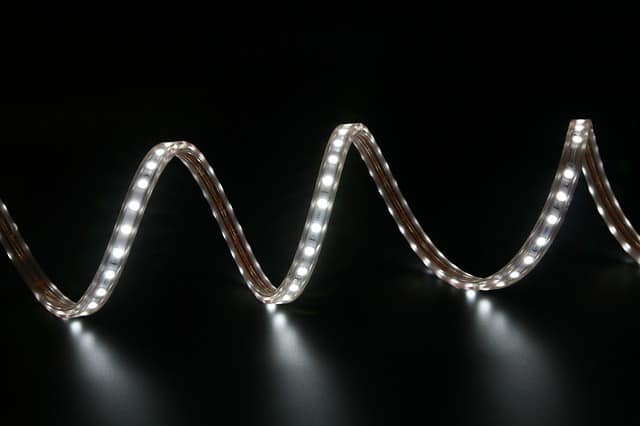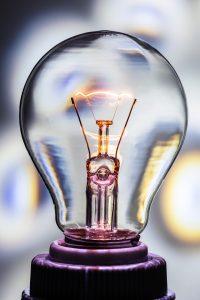How cool are these tiny electronics from the future that use microchips to light up your home, save you money, and possibly serve as an heirloom? Yes, LEDs are engineered to last for decades.
While shopping around, you must have had your head spinning reading the different lifespans indicated on the bulbs, ranging from 20,000 hours to 70,000 hours, claiming 10-year warranties.
And I bet you’re wishing you could have some way to look into the future to find out whether your bulb will actually last that long.
Well, I went and checked. So sit back and read on; I have some answers, and they might be surprising.
In a nutshell, because of how rapidly changing the LED technology is, and the extended number of years that they are supposed to last, it is still undetermined how long LEDs practically last. Moreover, a lot of external factors go into making your LED live up to the stated lifespan.
Light Bulbs Lifespan Compared
Comparing other bulbs and LEDs are very much like comparing apples and oranges.
Incandescents, for example, eventually heat up, their filaments break, and they simply stop working.
LEDs, on the other hand, go through what is called Lumen Depreciation. In essence, the components slowly degrade over time, and the luminosity gradually reduces, becoming dimmer and dimmer over the years.
So how do you decide when an LED dies?
| Type of Bulb | The Science | Average Life Span |
|---|---|---|
| Incandescent | Heating a Tungsten filament high enough to produce light, as a by-product of heat | <1,000 hours |
| Halogen | Similar to above, but filled with a halogen gas to keep the filament intact and cool | <8,000 hours |
| CFL | Phosphorus-coated tube with mercury vapour inside which gets electrically charged by ballast to produce fluorescence | <10,000 hours |
| LED | Semi-conducting, light-emitting diode that allows electricity to pass and convert into light | <50,000 hours |
Well, the powers that be, arbitrarily decided that the time elapsed until 70% of the original light output remained, would be defined as the average rated life of an LED. That is denoted as L70, called Lumen Maintenance.
How Long Do LED Strip Lights Last?
One of the quickest ways to get a Tron-inspired room is to install cyan-colored LED strip lights in creative places.
LED strip lights to come as a narrow reel of a flexible circuit board, mounted with individual light emitters, with a double-sided adhesive to hold the installation in place.
They are super versatile and easy to install. This is why you’ll also find them being sold online for dirt cheap, but know that those will not last at all.
A superior LED strip will give a solid 50,000 hours. That’s 15 plus years of regular use.
To ensure that, you need to adopt some good habits that come with taking care of any electronics. Keep the equipment cool, dry, and away from dust.
Don’t forget to look for a strip that has sufficient copper material in the circuit board, anywhere from 2 to 4 ounces of copper, so the strip can handle higher power and current, or else the solder will melt.
What’s more, is that you cannot get a high lumen with a low count of LEDs on the strip without overdriving the light emitters. Which means that you need to invest in a high count strip for a brighter light.
And to really make your LED strip last as long as stated, and beyond, is to take the extra time and put the strips inside aluminum channels that serve as a heatsink to dissipate heat.
You know your strips will be mounted on cabinets, bed frames, shelves, etc. And wood, if you remember from middle school, is an insulator.
The more wattage your LED strip requires, the bigger the aluminum housing it needs around it.
The operating temperature of 140℉ (60℃) is most likely the extent of the heat an LED strip can take before it rapidly starts degrading.
How Long Do Integrated LED Bulbs Last?
Believe me, with the way things are advancing in the LED world, soon changing light bulbs will be a thing your grandparents tell stories about.
All thanks to integrated LED fixtures. These are light sources in which the fixture and LED are one integral unit, connecting directly into the mainline. So the LED is hardwired into the fixture and cannot be replaced.
This is where LED technology really shines! The most long-lasting and durable LEDs are used in such luminaire to allow an extended lifespan of the entire installation.
The market share shift towards integrated lighting is enormous!
Theoretically, these fixtures are built to last and can work for decades.
Product failures are bound to happen. Due to the longevity of the product, other electricals might fail before the LED even begins to degrade.
And integrated LEDs can be tedious and costly to replace. To counter that, an extended warranty helps, but not without adding to the already high upfront cost.
Usually, their power supply is housed separately, making that easier to replace if it fails.
Now to find out what exactly goes kaput in LEDs and how you can save your precious purchases.
Why Do Your LED Lights Keep Burning Out?
Did you know that The U.S. Department of Energy (DOE) tested and found out that when an LED bulb fails, only 10% of the time, it is the light emitter’s fault, while the remaining 90% of the time it is due to other factors?
So what impacts the life expectancy of LEDs? The weakest link, it seems, is defect in the materials used, the capacitors and semiconductors.
No doubt about it, around 60% of the time, the crime scene is the circuit board. And the more features a bulb has, such as dimmable light, the more circuits it would have and thus more points of failure.
Don’t forget that electronics are packed into a small space at the base of the bulb, and that means trapped heat.
LEDs thus carry heatsinks or finned designs to prevent that as much as possible.
But even so, sometimes the culprit is a wrongly rated LED used in an enclosed fixture, which traps even more heat. Read more on my blog about using the correct LED in enclosed fixtures.
Another critical area of concern is the inappropriate electric driver or absence of constant-current chips. This means the bulb is unable to regulate power surges due to faulty power lines.
And guess what? Your mother was absolutely right about not turning the bulb on and off too quickly!
The power surge that comes with an LED being switched on and off many times also causes electrical overstress (EOS) on the microchips.
Thankfully, to prevent this fault, a lot of LEDs now come with ‘Soft Start,’ whereby the bulb takes a moment to turn entirely on.
Or sometimes, it’s just better to leave the bulb on if you need to turn it off just for a little while.
And is there anything else you can do to keep your LEDs healthy? Absolutely!
How to Increase The Lifespan of LED Bulbs?
Firstly, understanding the difference between Lumen Maintenance denoted by L70/L50, and Average Rated Life (ARL) will help you buy the longest-lasting bulb.
ARL is the time frame in which 50% of the tested bulbs are still working (B50), while Lumen Maintenance (L70), is the time frame in which a bulb’s light output is still functioning at 70 percent.
Moving on to the practical application of the bulbs, here are a few things you can do to maintain the lifespan of the bulb:
- Don’t mix bulbs in a fixture. Incandescents run hotter and can bring up the ambient temperature of the fixture, heating up your LEDs which love to run cool.
- In the same vein, have good-sized luminaires for adequate ventilation.
- It’s also a good practice to buy larger bulbs for heat dissipation reasons, and look for air gaps and heatsink at the bulb’s base.
- Don’t leave LEDs on for extended periods. While they don’t cost much to keep switched on, their life span shortens, you waste energy and, not least, contribute to light pollution.
- Check the LED components used on the bulb’s datasheet for high quality.
- Also check the operating temperature range in which the bulb performs best. These will usually be ranging from -25 ̊C – +45 ̊C (-13 ̊F – +113 ̊F).
Final Words
Now you’re armed with some great knowledge on the ideal conditions in which to run your LEDs and the various new applications on the market that need special considerations while installing.
Seeing as how LEDs are closer to computer tech than light bulb tech, it serves to treat them as such. Heat control and proper ventilation are essential to keep things running.
- I am curious to know how well are your LED strip lights or integrated fixtures serving you?
- What’s your biggest factor in deciding which kind of bulb you buy?
Looking for an LED bulb but not sure what type you need?
Check out my free bulb picker and select the right bulb within few clicks.




Comments are closed.